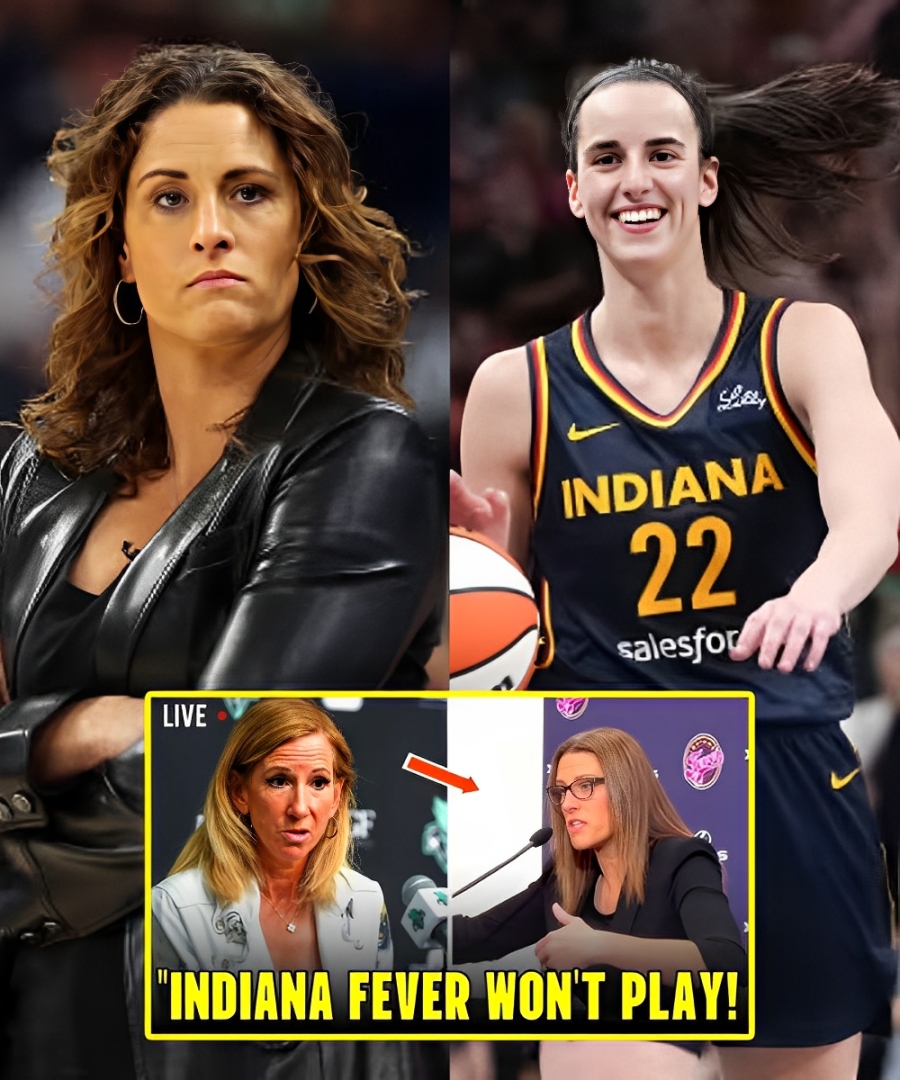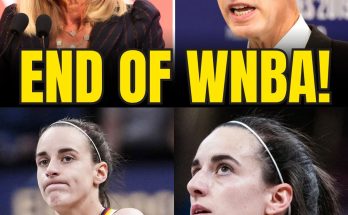WNBA Faces Crisis: Caitlyn Clark’s Brutal Treatment Exposes League’s Unchecked Officiating Crisis
The WNBA’s image is in jeopardy. As the league’s brightest star, Caitlyn Clark, continues to be relentlessly fouled without protection from officials, Indiana Fever’s coach Stephanie White has had enough.
After a string of incidents where Clark was repeatedly targeted with aggressive, uncalled fouls, White stepped onto the court and unleashed a fiery critique of the referees.
This moment wasn’t just about one game—it was a clear message to the league: the WNBA’s refereeing needs urgent reform, and Clark, the league’s most marketable player, deserves better.

Clark’s Unrelenting Treatment: A Crisis of Fairness and Safety
Caitlyn Clark, the star player who has brought mainstream attention to the WNBA, has been subjected to brutal physical play that goes unchecked by referees. As White pointed out, the Indiana Fever’s star has faced a staggering “minus 31 free throw discrepancy,” a statistic that’s become all too common in games involving Clark. But it’s not just the numbers; it’s the physical toll. Clark has been elbowed, shoved, and fouled repeatedly, yet the officials seem to turn a blind eye, letting her absorb punishment with no whistles to protect her.
Fans, coaches, and players have taken notice. The lack of officiating integrity is evident in every game Clark plays. What was once an exciting league filled with thrilling basketball has turned into a chaotic, unregulated brawl where stars like Clark become punching bags for jealous defenders. Even as Clark plays with the intensity and skill of a generational talent, the WNBA’s referees are failing her, allowing the game to descend into a violent spectacle instead of a basketball contest. As Clark is relentlessly attacked on the court, the WNBA seems to be condoning her treatment, failing to address the disparity in officiating.
The League’s Inaction: Worsening the Crisis
The aftermath of Clark’s rough treatment was palpable. After the latest series of no-calls during Clark’s drives to the basket, the referees couldn’t even face her. When Clark and Sophie went to address the officiating crew, the referee walked away, avoiding eye contact with the players. This is unheard of in professional basketball, where players often interact with referees to understand calls or seek clarification. But instead of transparency and respect, the officials acted with blatant indifference, further adding fuel to the fire.
The WNBA’s refusal to hold its referees accountable reflects a larger issue within the league. The officials are not just missing calls—they are enabling a culture of violence, one where aggressive defenders are allowed to push and shove Clark without facing any consequences. As Clark’s physical treatment continues unchecked, the WNBA is sending the message that the league’s stars are expendable, leaving fans and players disillusioned with a system that fails to protect its talent.
The Stakes: League Integrity and the Future of the Game
Clark is the most marketable player the WNBA has ever seen. Her influence has elevated the league to new heights, bringing in viewers and fans who never thought they’d tune into women’s basketball. In fact, Clark’s presence alone has been responsible for a dramatic rise in attendance, merchandise sales, and media coverage. However, her treatment on the court has raised serious concerns about the league’s ability to protect its players, especially those who are central to its growth.
The stakes for the WNBA are enormous. If the league continues to fail in protecting Clark and other stars, it risks losing its credibility, the trust of its fans, and the very players who are driving the sport forward. A league built around Clark’s star power is now crumbling under the weight of negligence and mismanagement. If Clark, who has become the face of the WNBA, is allowed to continue playing without the necessary protection, it could signal the beginning of the end for the league’s mainstream appeal.
The Call for Change: Protect the Players, Restore Integrity
Stephanie White’s fiery comments were a wake-up call. It’s clear that the WNBA must address the disparities in officiating, the physical toll on its players, and the blatant disregard for fairness on the court. If Clark and other players are not protected, it could set a dangerous precedent for future athletes. The WNBA needs to prioritize player safety and fairness in officiating, not just for the integrity of the game, but to preserve the league’s future.
The current state of the league reflects a failure in leadership—referees are too complacent, the officials too often look the other way, and the WNBA’s governing bodies have yet to step up and address the crisis. It’s time for the league to take action, to protect its stars, and to restore fairness and integrity to the game. Fans, players, and coaches alike are demanding change, and the WNBA must act before it loses everything.
Conclusion: Can the WNBA Bounce Back from This?
Caitlyn Clark’s injury is a symptom of a much larger issue within the WNBA. If the league cannot figure out how to protect its most marketable and influential player, it risks alienating fans and players alike. The message is clear: the WNBA must choose whether to continue enabling the chaos or take steps to fix the system, ensuring the safety and integrity of the game.
As fans have pointed out, the physical toll on Clark, combined with the league’s apparent indifference, has turned the WNBA into a spectacle of violence instead of the exciting basketball league it could be. The clock is ticking for the WNBA to step up, and it’s time for the league to protect its players, restore the integrity of the game, and rebuild trust with its fanbase before the damage becomes irreparable.



